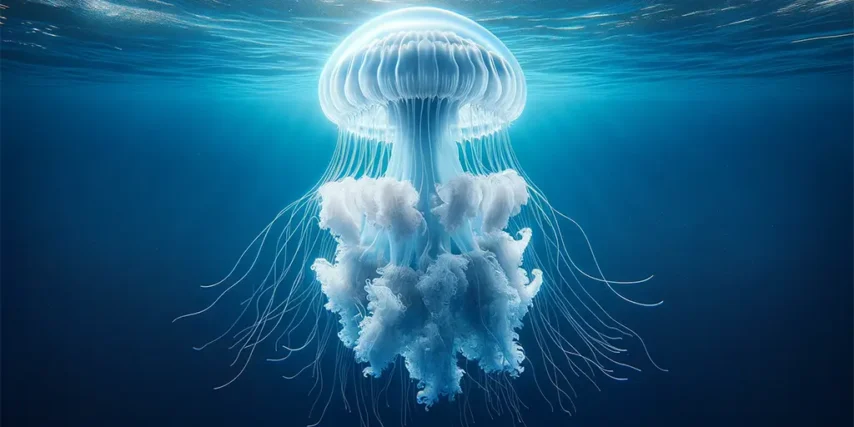Memory updated
How Do Jellyfish Feed?
Introduction
Jellyfish are fascinating creatures known for their mesmerizing appearance and unique biological features. They are a part of the phylum Cnidaria and are found in oceans all over the world. Despite their simple body structure, jellyfish have evolved efficient methods to capture and digest their food. This article delves into the intricate feeding mechanisms of jellyfish, exploring how these gelatinous creatures sustain themselves in their aquatic environments.

Anatomy of a Jellyfish
To understand how jellyfish feed, it’s essential to first grasp their basic anatomy:
- Bell: The umbrella-shaped structure that forms the main body of the jellyfish.
- Tentacles: Long, trailing appendages that hang from the bell. These are equipped with specialized cells known as cnidocytes.
- Mouth: Located on the underside of the bell, usually in the center, through which the jellyfish consumes its prey.
- Gastrovascular Cavity: A central digestive compartment where food is broken down.
Feeding Mechanism
Jellyfish are carnivorous and primarily feed on small marine organisms such as plankton, fish eggs, larvae, and even small fish. Their feeding process involves several key steps:
1. Detection and Capture
Jellyfish use their tentacles to sense the presence of prey. The tentacles are armed with cnidocytes, which contain nematocysts—stinging cells that can inject toxins into prey upon contact. When a prey item brushes against the tentacles, the nematocysts fire, immobilizing the prey.
2. Transport to the Mouth
Once the prey is captured, the tentacles contract, bringing the prey closer to the bell. The tentacles then transport the prey to the mouth. This process can be quite rapid, ensuring that the prey does not escape.

3. Ingestion
The mouth of the jellyfish opens to engulf the prey. This opening leads directly to the gastrovascular cavity. The mouth can expand significantly to accommodate larger prey items.
4. Digestion
Inside the gastrovascular cavity, digestive enzymes break down the prey into simpler molecules that can be absorbed. The cavity serves both digestive and circulatory functions, distributing nutrients throughout the jellyfish’s body.
5. Expulsion of Waste
After digestion, the waste products are expelled through the same opening used for ingestion—the mouth. This process is efficient, allowing the jellyfish to maintain a continuous feeding cycle.
Types of Jellyfish and Their Diets
Different species of jellyfish have varying diets and feeding strategies:
- Box Jellyfish: Known for their potent venom, they primarily hunt small fish and invertebrates. Their tentacles are highly sensitive and can deliver a powerful sting.
- Moon Jellyfish: These jellyfish have a more passive approach, using their tentacles to capture plankton and small fish as they drift with ocean currents.
- Lion’s Mane Jellyfish: The largest species of jellyfish, they can capture and consume larger prey due to their size and extensive tentacles.

Adaptations for Feeding
Jellyfish have developed several adaptations that enhance their feeding efficiency:
- Bioluminescence: Some species can produce light, which may attract prey or deter predators.
- Translucent Bodies: This helps them blend into their surroundings, making it easier to ambush prey.
- Efficient Energy Use: Jellyfish use a pulsating motion to move, which requires minimal energy, allowing them to conserve energy for feeding.
Conclusion
Jellyfish are remarkable predators with highly specialized feeding mechanisms. Their ability to detect, capture, and digest prey with such simplicity and efficiency highlights the marvels of evolutionary adaptation. By understanding how jellyfish feed, we gain insight into their role in marine ecosystems and the complex interplay of oceanic life forms.







